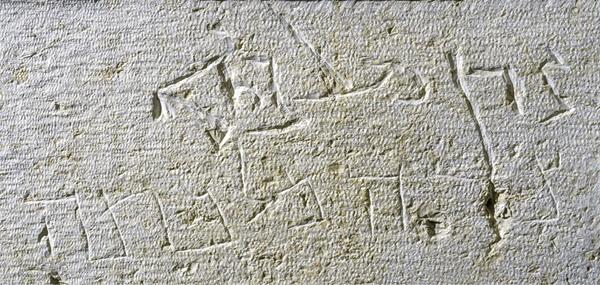Image Details

CHAMBERI/CC BY-SA 3.0
RECORDED IN TWO DIALECTS of Aramaic (Judean and Syriac), the inscription on this limestone sarcophagus (detail pictured here) mentions a queen named Tsadah and Tsadan, respectively. While the meaning of the name is still debated, most scholars have assumed the inscription dates to the mid-first century C.E. and refers to Queen Helena of Adiabene. New epigraphic studies, however, suggest the sarcophagus and its text may date more than a century later, possibly belonging to one of Helena’s royal descendants. The artifact was discovered in 1863 by Félicien de Saulcy deep within the Tomb of the Kings and is now in the Louvre.
